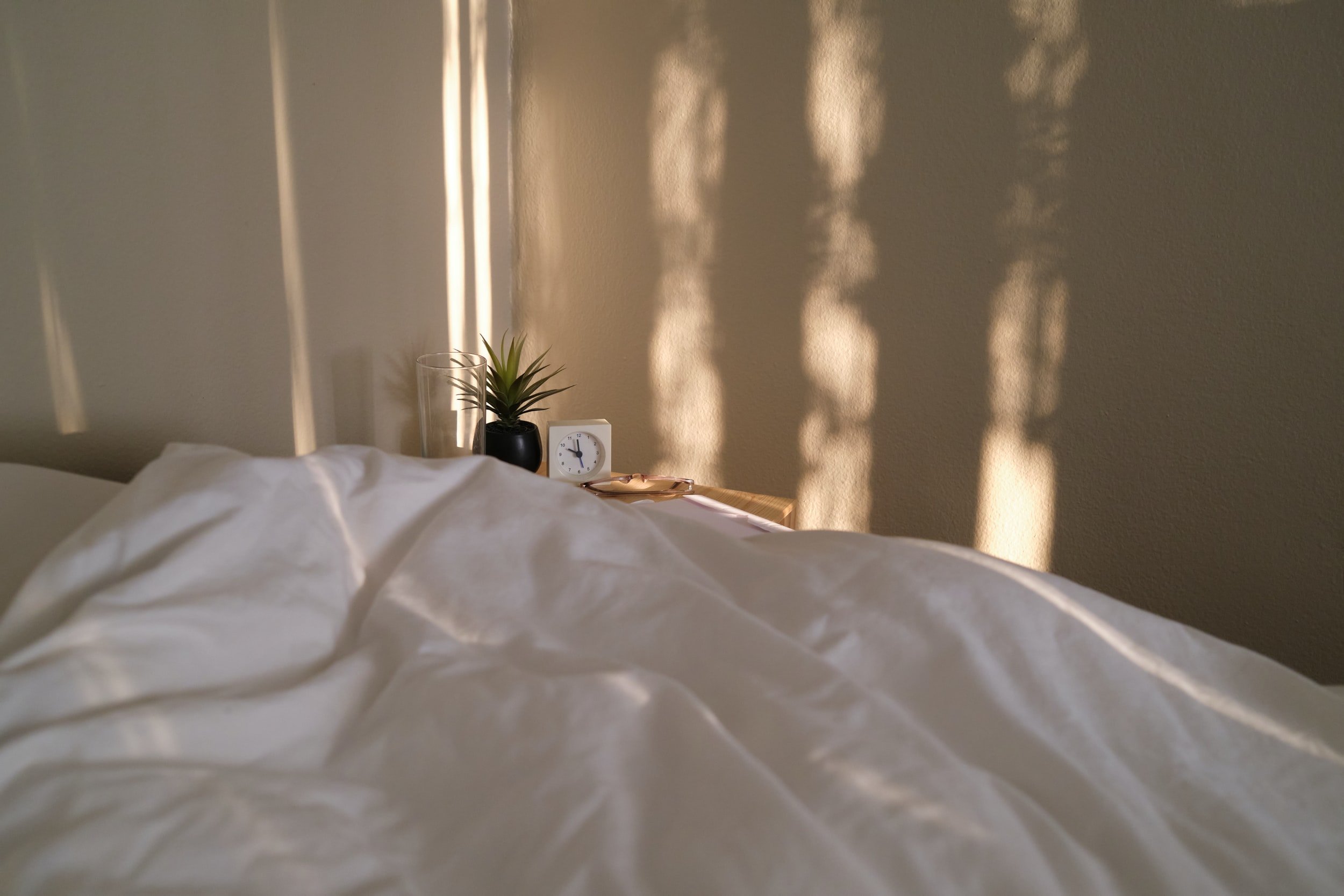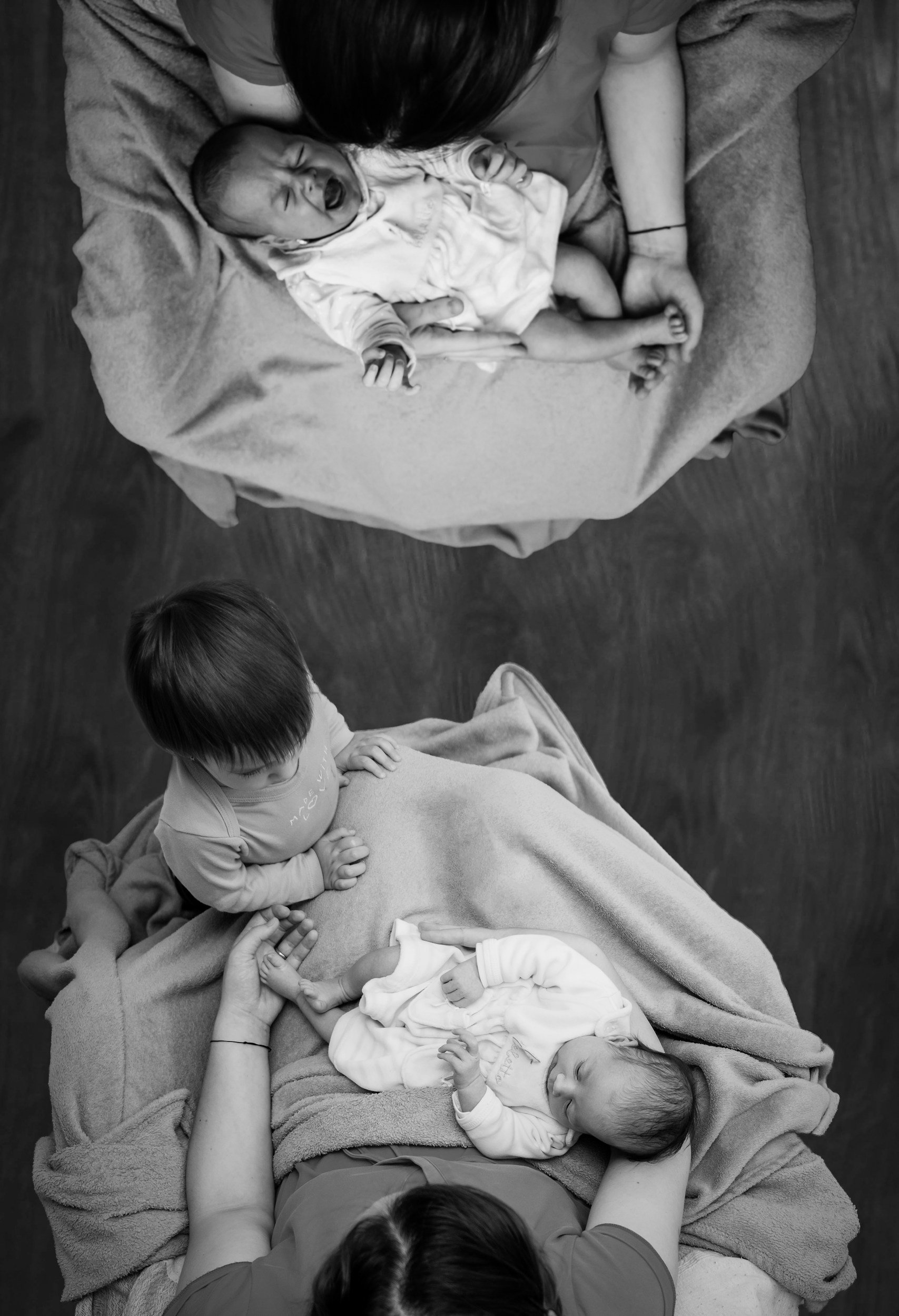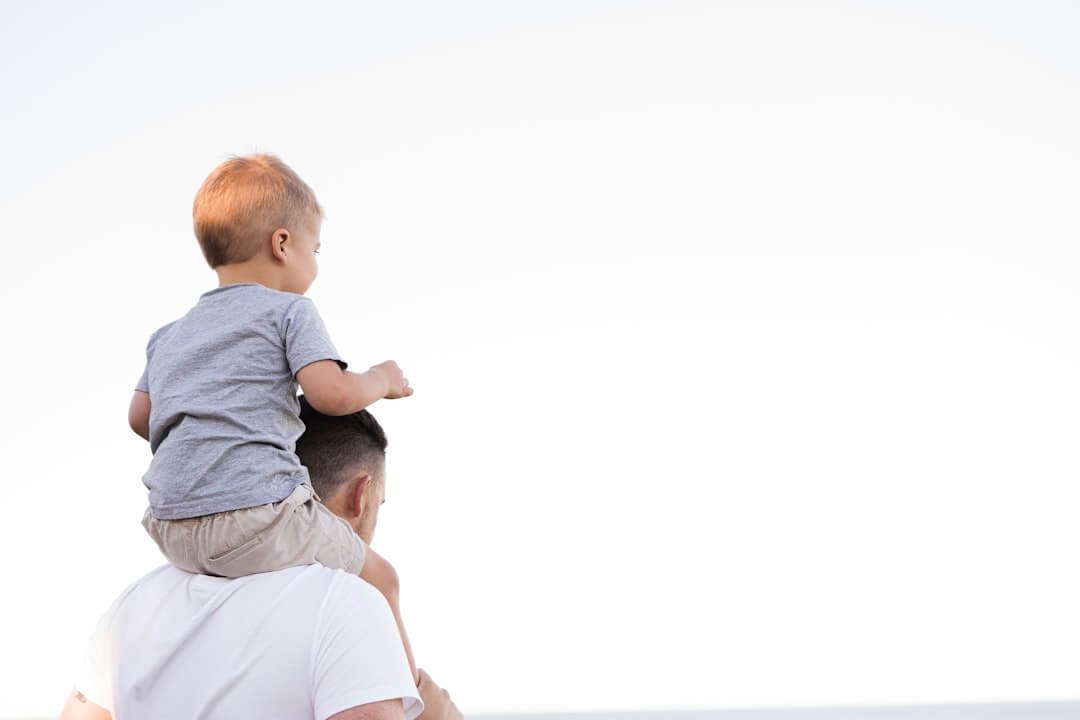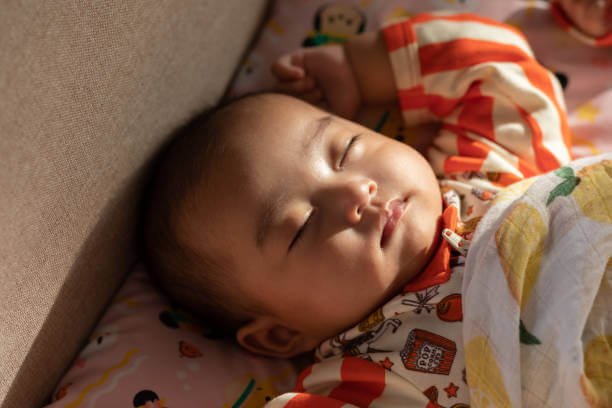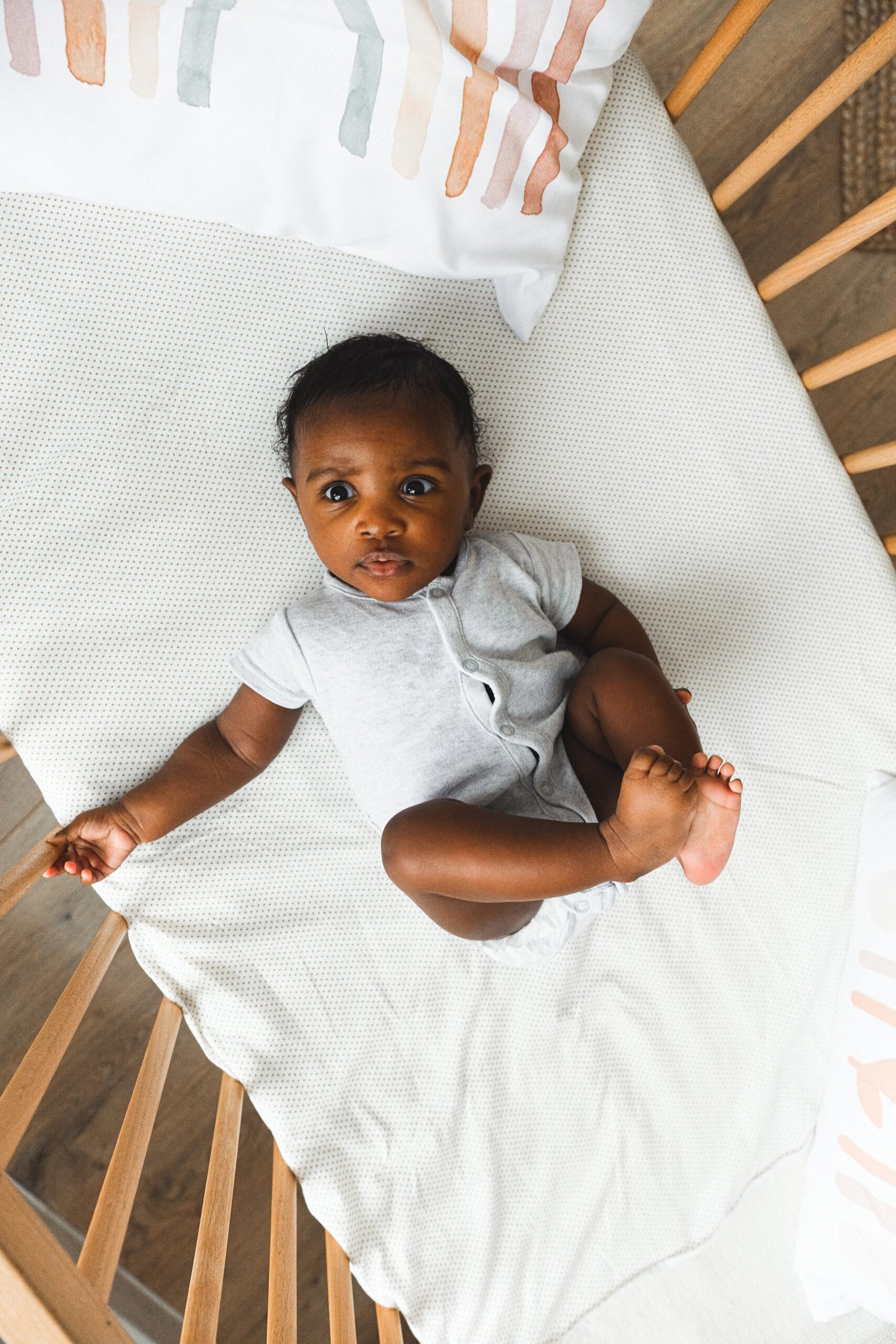I'm Rachael
Mom of 3 & Baby Sleep Expert with Big Sis Energy
& I’VE DONE ALL THE RESEARCH FOR YOU ALREADY.
Better sleep for the entire family
BROWSE COURSES
hey!
Tips for Siblings Sleeping In the Same Room
in this post:
The addition of a new sibling is a huge transition for all family members but especially siblings. It’s another person to share their parents’ attention with and a change to their familiar setup at home. There are many differing views as to the right age gap between siblings. Many suggest a small age gap believing siblings closer in age will have a better bond. Others champion a larger age gap where the older sibling’s need for mom is less, meaning they can adjust to the new dynamic without as much jealousy. And as for sleep, some parents prefer to get the sleepless nights over in one big chunk and others prefer a gap to reset themselves. Every family is different, and each baby has a specific set of needs so there can be no right answer but there are some brilliant strategies you can adopt to help ease some of the hotly debated topics with sibling sleep. For example, a commonly asked question is, can my toddler and baby share a room at night?
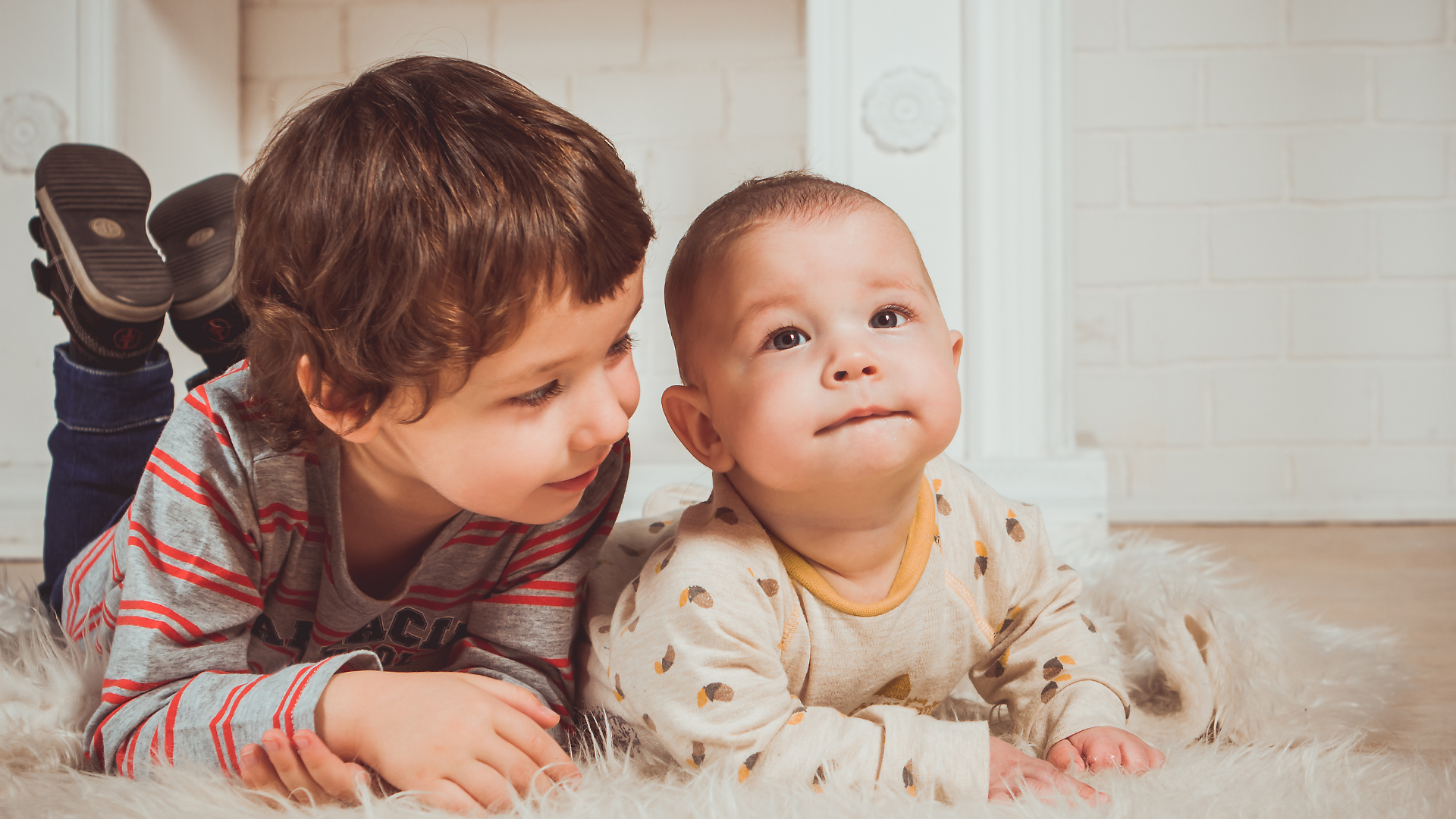
Reasons for Siblings to Share a Room
There are a whole host of reasons why parents may consider moving siblings into the same room from economic to emotional. Some families will have no option but for siblings to share and for some they will actively choose this route. It is thought that room sharing may help alleviate sibling rivalry, foster a close bond and create a sense of security. However, on the flip side of this, it could potentially mean some disturbed nights for both children as we all know baby and toddler sleep is unpredictable!
When Can Siblings Begin To Share a Room?
Figuring out when to begin room sharing is important. It’s an idea that conjures up images of siblings giggling and laughing but it isn’t always like that and there may be some problems you face. It’s a huge transition for both siblings and ensuring they are both feeling positive and emotionally supported with the change is vital. Ideally your baby will be sleeping with you until at least six months, although the American Academy of Pediatrics (AAP) now recommends a year. This can be a good time to begin the transition, although some families prefer to wait until their baby is sleeping through the night BUT we all know how unpredictable that can be!
One thing you can consider is having your children share a room sometimes. Maybe you have an infant and a toddler who still naps. They could nap in the same room but still spend nights apart if baby is still rooming in with you. Don’t be afraid to get creative!
As far as safety goes, this is up to each family to decide based on the ages, needs, and personalities of each child. Young children should not share a bed until the youngest is 12 months at minimum (the AAP’s stance is to never allow an infant to bed share even with parents), though there’s limited research about when they can start. Generally speaking, an adult mattress is not tested for safety for infants under two years. So for an infant plus a toddler or older child, it’s safest NOT to bed share even with parents present. Room sharing, though, can be done any time, so long as your older child is able to be safe around the baby’s sleep space and can be closely monitored. More on safety for the baby at the end of this post.
First Thing’s First: Setting Up the Sleep Space
When you are setting up the sleep space:
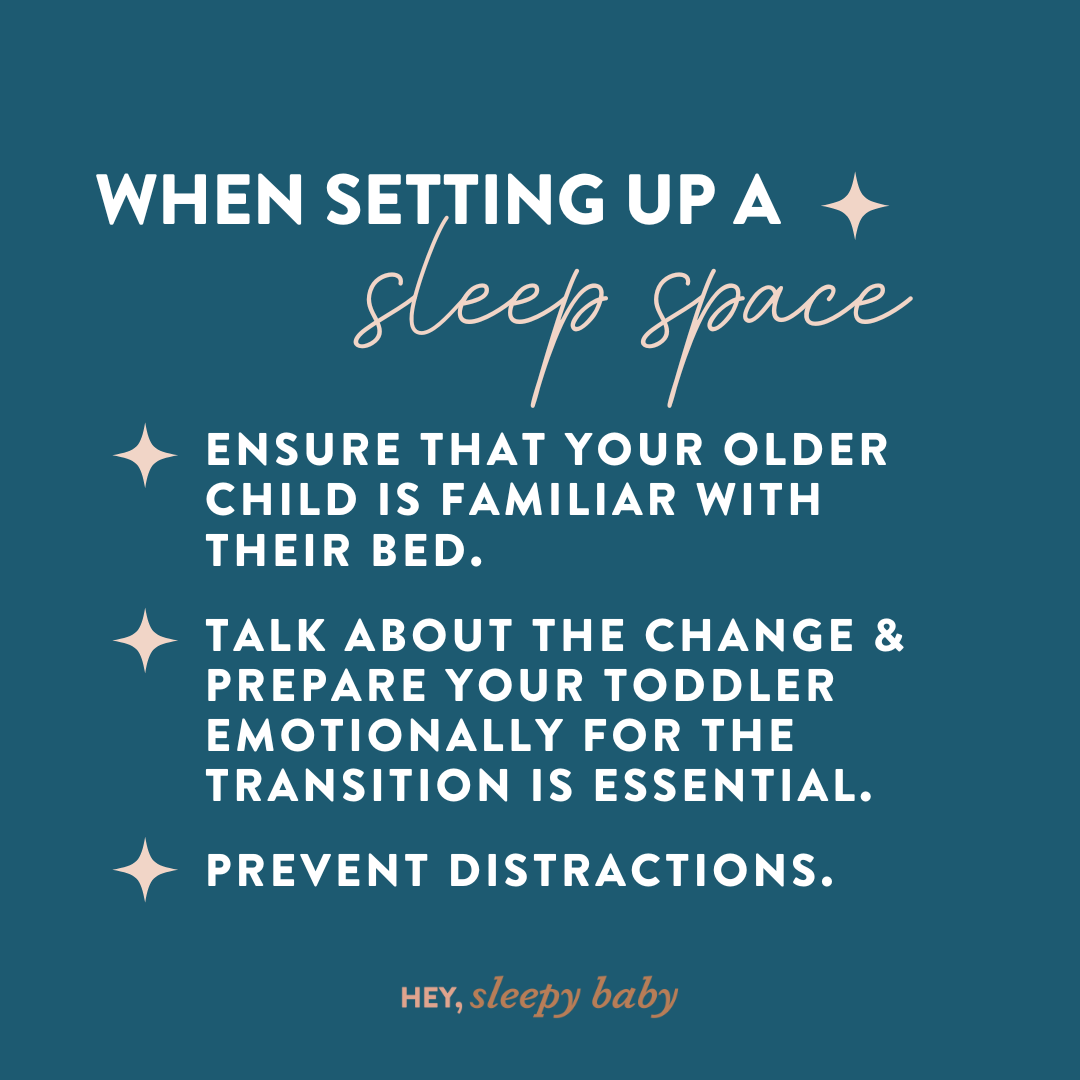
-
Ensure that your older child is familiar with their bed. Now is not the time to make any big changes such as transitioning them from a crib to bed. It’s a big step becoming an older sibling and room sharing comes much more naturally to some children than others. Beginning the change with a positive feeling toward their bed and familiarity around their sleep space, routine, etc. will help smooth the transition.
-
Talking about the change and preparing your toddler emotionally for the transition is essential. If they hear you talking positively about the change and how much fun it will be to share with their sibling, it will help them to make positive associations in their brain. This can be done using a social story or by role playing. Creating a little book or “social story” for your older child to read about the change that is about to happen in their life can be a lovely way of easing into the transition.
-
The sleeping space needs to be safety proofed. Ensure all wires and cords are removed or out of reach. Secure any furniture to the wall and make sure the space is both baby and toddler proofed. This includes anything around the crib that your toddler could use to climb into the crib from! Furthermore, the sleep space will ideally be set up so that you can see both children’s sleep spaces on the video monitor. This is especially important if the older child is in a bed and free to move about the room.
-
Prevent distractions. It’s likely that your little ones will love being together, and some silliness might ensue. To try to help them settle down and prevent them from waking each other, think about how to set up the room. Utilize things like blackout curtains or a room divider if seeing each other is making it hard for them to calm down. You also want to be sure you have a white noise machine going in the room. Lastly, think about how to manage bedtime and night wakings. Maybe you have a staggered bedtime (more on that next) or you take baby out of the space during a night feeding to avoid waking your older child. Flexibility is key when siblings are room sharing!

Bedtime Routines
Moving siblings into the same room can alter the dynamic of your bedtime routine. It can feel a little overwhelming and is a learning curve that is sometimes a matter of trial and error. Siblings are all so different, from temperament to sleep needs. You know your children best so try and weave their individual needs into a structure that works for your family.
If you have a teammate, the divide and conquer method is useful in facilitating two different bedtime routines. If mom is breastfeeding it can be helpful to have the other parent do your older child’s bedtime. Both your children will have access to connected, quality time before bed and each of your children’s needs can be attended to. If your children’s wake windows or bedtimes don’t line up it can be useful to split bedtimes in this way so that one child has the opportunity to fall asleep before the other.
Another method is to have a joint family bedtime. This can help facilitate the sibling bond and ease toddler and baby sleeping together. If one or both parents are out at this work this is a sweet way to reconnect as a family at the end of the day with the joint sharing of stories and cuddles. However, this can often require figuring out a toddler and baby sleeping schedule for your children so that their bedtimes align. This can mean extending wake windows, shortening naps, etc but again it’s trial and error and you will find what works for you.
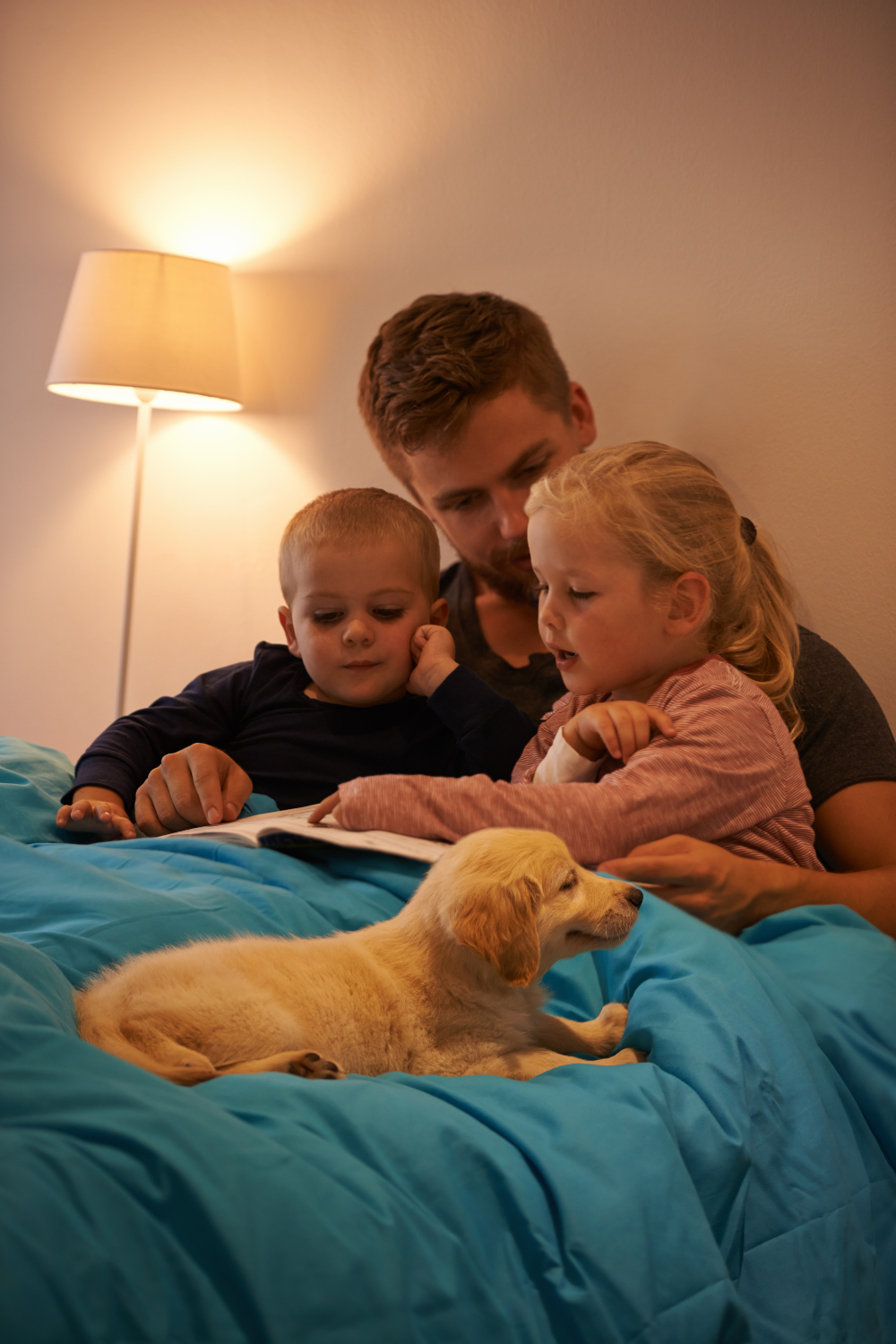
If you are solo parenting and are managing a double or triple bedtime alone my best tips are to babywear, bed share, or room share. This way you can bathe your toddler while you babywear, or you can feed as you read to your toddler or feed as you snuggle next to your toddler whilst they fall asleep. Listening to songs, an audiobook or meditation is a lovely way to wind down together- your older child can fall asleep while you hold or feed the baby, etc. Bed sharing or room sharing can happen in any space. It doesn’t have to happen in their designated sleep space. Solo bedtimes are hard and you can always transfer them to their sleep space once they are asleep. Another way to approach solo bedtimes is to stagger your children’s bedtime. Settling your baby first whilst your toddler plays and then having some alone connected time with your toddler may help soothe their bedtime. Even if your baby doesn’t manage more than one sleep cycle this usually allows you enough time to settle your toddler. This may again mean some tweaking of naps and daytime routine to facilitate.
In my household, what we did for a little while as a bedtime routine for siblings who share a room was I would handle bath time with both children while my husband cleaned the kitchen. We all then hung out in the bedroom together connecting and doing pajamas and books. We then each took a child and laid with them to fall asleep. They initially had a hard time settling together when it was a fairly new setup for them. I laid with Noe (2.5 year old) in our bed and my husband laid with Otto (5 year old) in Otto’s bed. We then transferred Noe to her bed in their shared bedroom and the rest of the evening was ours!
Keeping the Sleeping Space Safe for baby
When looking to move towards baby naps in the crib, you need to ensure the new sleep space is safe. For safe crib sleep, there needs to be no bumpers, blankets or pillows. It’s easier to opt for a wearable blanket or sleep sack for warmth. Make sure there are no open windows and wires, and blind cords and curtains are out of reach. Loveys can be introduced after 12 months but pacifiers are considered safe to be in the crib with baby. The other thing to consider is shelving and wall hangings and make sure these are not accessible from the crib. You of course need to consider the age and personality of your older child as well. Will they try and put things in the crib with the baby? Try to climb in with them? These are important things to consider to be sure your baby is safe. A video monitor is a great idea, as well.
If you are looking to transition a baby from sleeping in your arms to sleeping in the crib, no matter which room it’s in, remember to make sure the sleep space is familiar, your sleep associations are built up and practiced, and your transition technique is slow and gentle. My Ultimate Crib & Floor Bed Guide can help you with all of this- from ensuring a safe space to troubleshooting common issues!
The Tender Transitions Course provides you with a step by step on how to move away from any sleep sitch that’s no longer working for you- whether it’s bouncing or rocking to sleep, feeding to sleep or cosleeping/ bed sharing.
If your toddler or older child is having a very hard time with bedtime, I highly recommend the Better Bedtimes Guide which will give you tons of practical tips to be well on your way to a smoother, calmer bedtime!
For more on siblings, listen to my podcast episode with Jess VanderWier of @nurturedfirst as we talk all about adding another to your family!
Featured
When daylight saving time ends, we “fall back” one hour, meaning that sunrise and sunset will occur an hour earlier. How will this affect your baby’s sleep?
Responsive sleep tips and support for parents of multiples or twins.
What are floor beds? When to use them? And How to use them?
Was this helpful? Save it for later!
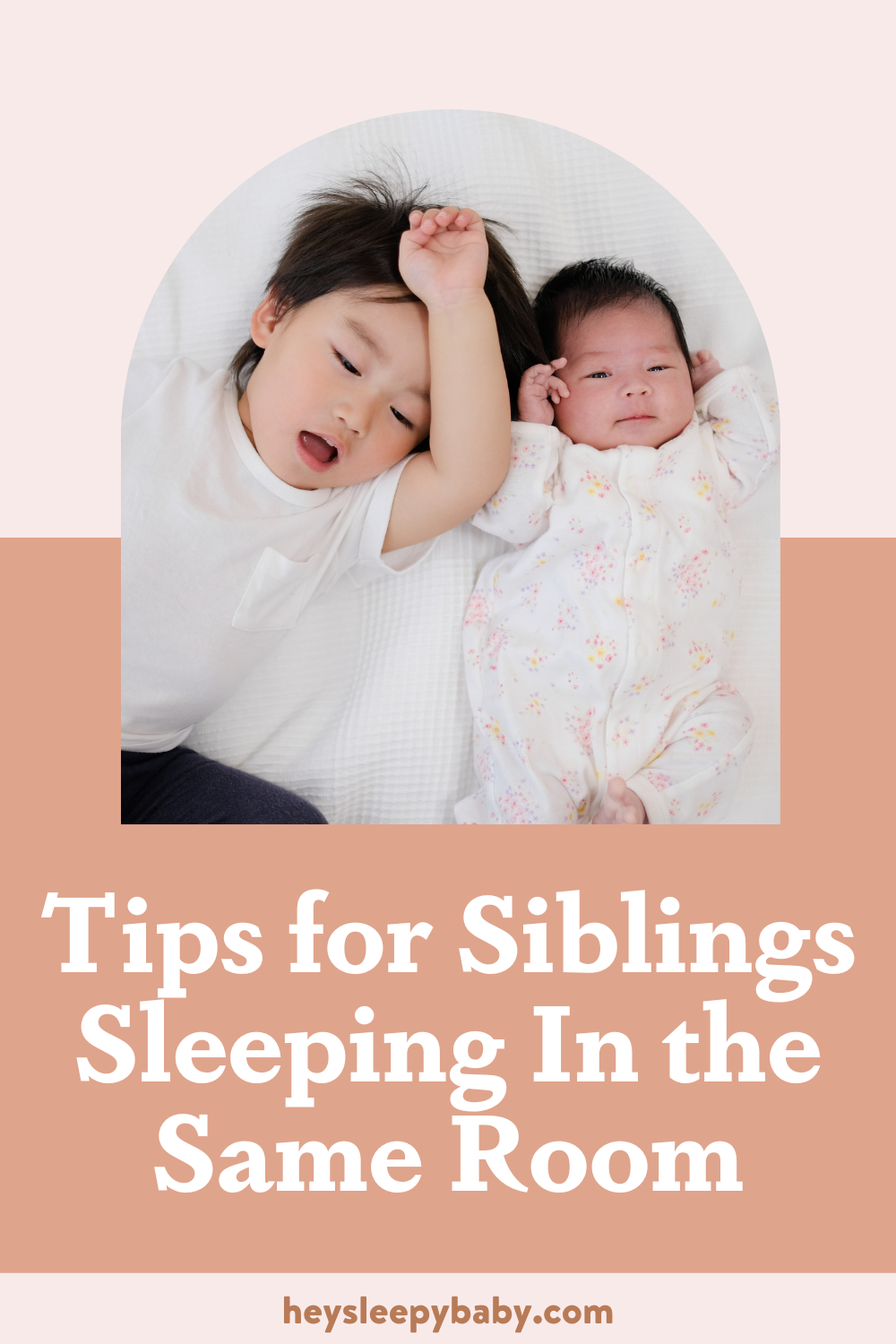
binge reads
We think you'll love these
You deserve to the
baby stage, not just "survive it."
And you DON'T have to sacrifice your values, ignore your instincts, or force yourself to follow a method you don't align with just to get your baby back to sleep.
I’m here to help you create a restful, sustainable sleep environment that honors both your baby’s needs AND your own (without the stress OR the guilt!) because, no, you don’t have to choose between the two.
enjoy!
BABY SLEEP COURSES →
BABY SLEEP CONSULTS →
Wish you could help your baby sleep better without resorting to sleep training? Download my FREE guide to a good night’s sleep and learn 8 simple, science-backed tips for supporting your child’s needs.
Traditional sleep training methods don’t have to be your solution to better sleep.
SLEEP TRAINING ISN’T THE ONLY WAY TO GET GOOD SLEEP
Hey, I'm Rachael and Hey, Sleepy Baby is for parents who want to get their nights back, without sleep training their babies.
NO ONE TOLD US POD
explorING the untold truths of parenting
